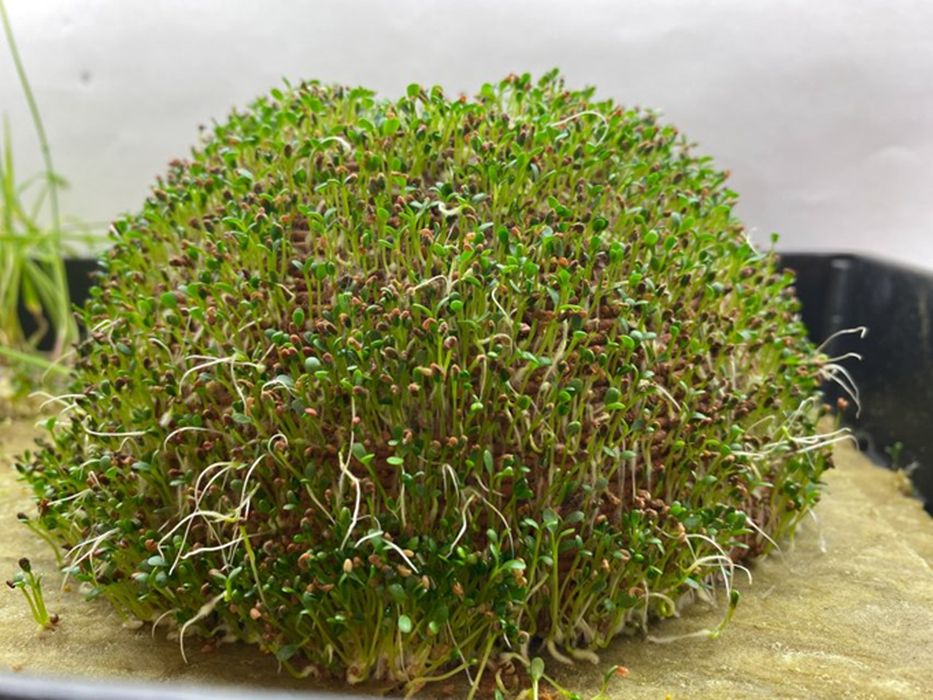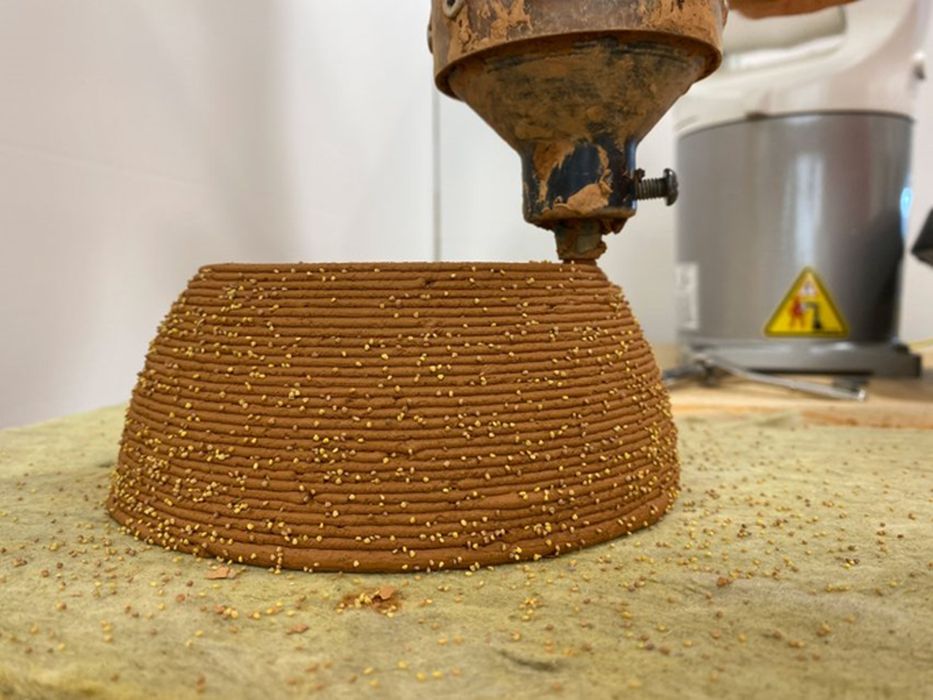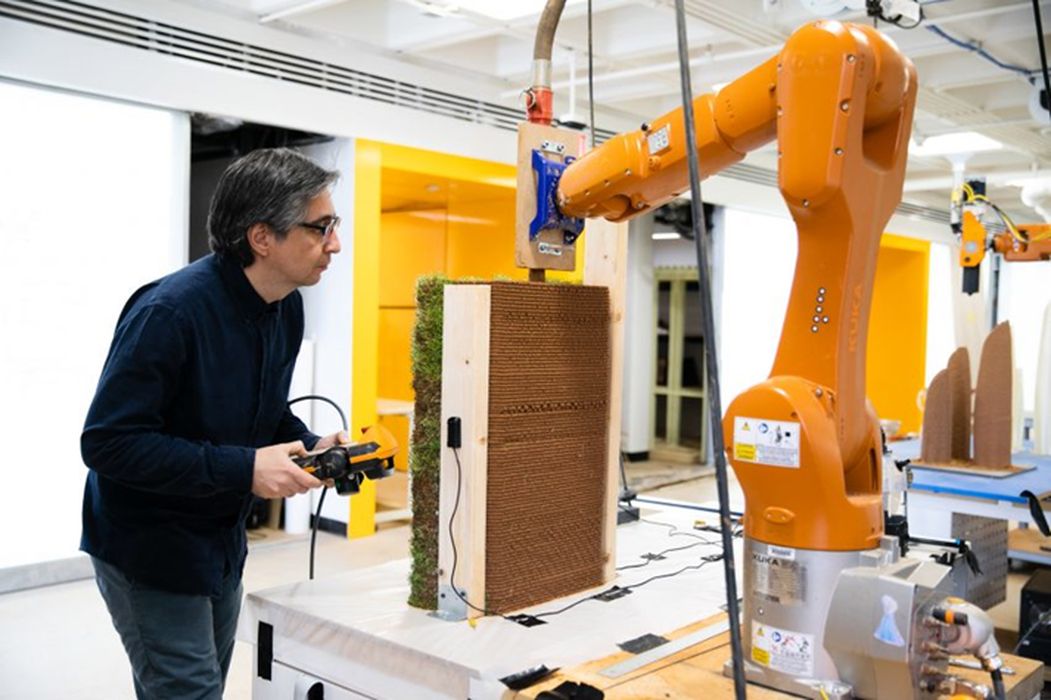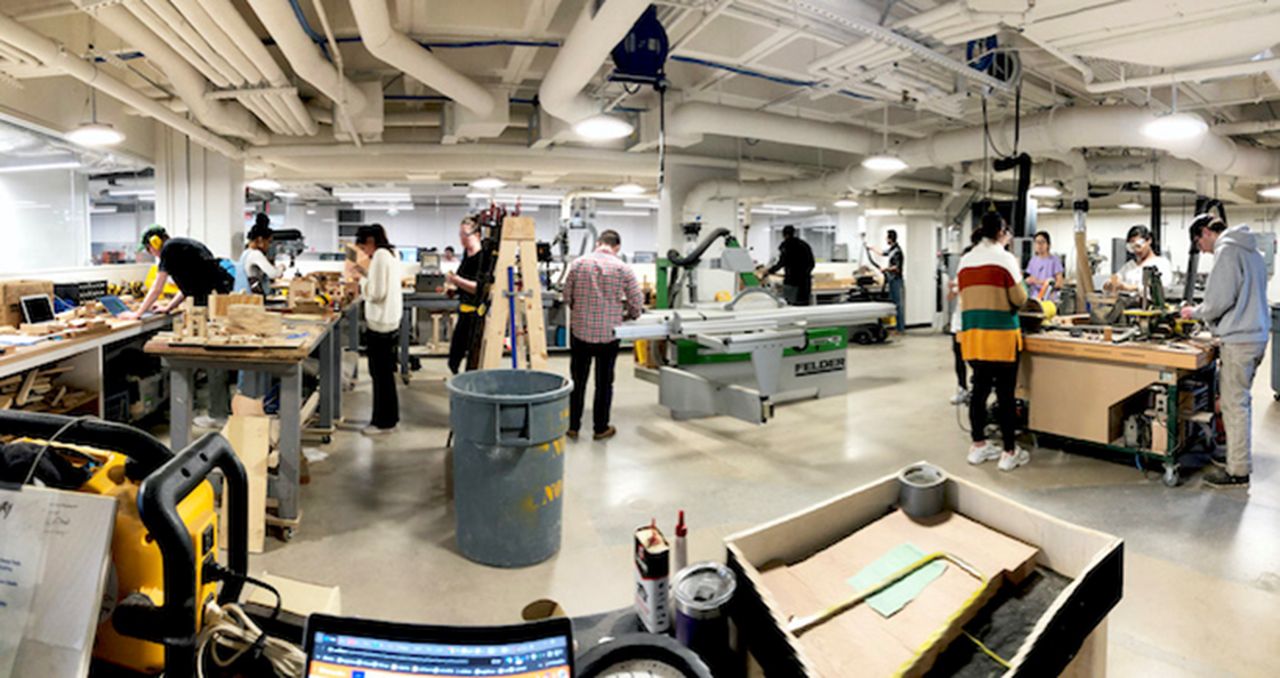
Charles R. Goulding and Preeti Sulibhavi examine some interesting developments in 3D printing at the University of Virginia.
For those of you old enough to remember Chia Pets, the recent development at the University of Virginia might seem familiar. But the goals of researchers at the University of Virginia (UVA) far exceed just manufacturing hobby projects.
Researchers at UVA are working to combine seeds into the “soil ink” material fed into 3D printers to create architectural structures that have plants and greenery built into the structure itself, not just planted on top.
By combining 3D printing with “soil ink,” and architectural designs, building materials with large carbon footprints can be replaced with circular alternatives that can be recycled and reused. These researchers believe that this 3D printing technique could result in carbon neutral or carbon negative (removing carbon dioxide from the atmosphere) building solutions. Robots were used for mounting the 3D printing system to enable the fabrication of elevated and more complex architectural soil structures.
Issues that the researchers encountered include soil cracking (with increased height and weight of structures) and insulating the inner wall from the outer wall of soil layers by using multiple materials.
We have written about 3D printing with plants in previous articles including, mycelium, plant appliances, and other gardening pieces.

The 3D Printing Studio at UVA is available to all students who have an interest. Students must complete an online orientation and be willing to complete an in-person assessment before reserving their 3D printer. UVA offers advanced training to certified users as well.

The lab is home to ten FFF printers and has trained staff on hand to assist those who are less familiar with the technology.
The Fabrication Lab, or FabLab, at the UVA School of Architecture is a center for empowering people with tools for making, prototyping, and construction at a range of scales, materials, and techniques. The FabLab Team is run by Melissa Goldman and Trevor Kemp, two full-time fabrication experts, and a Crew of undergraduate and graduate student assistants, all passionate about making and teaching.
The FabLab is a 7500sf of project and shop space housing several tools for analog and digital fabrication.

The FabLab includes a metal 3D printer, clay 3D printer, and several Kuka robots. The 3D printer brands include Stratasys FDM printers and Formlabs SLA printers.
The Research & Development Tax Credit
The now permanent Research and Development (R&D) Tax Credit is available for companies developing new or improved products, processes and/or software.
3D printing can help boost a company’s R&D Tax Credits. Wages for technical employees creating, testing and revising 3D printed prototypes can be included as a percentage of eligible time spent for the R&D Tax Credit. Similarly, when used as a method of improving a process, time spent integrating 3D printing hardware and software counts as an eligible activity. Lastly, when used for modeling and preproduction, the costs of filaments consumed during the development process may also be recovered.
Whether it is used for creating and testing prototypes or for final production, 3D printing is a great indicator that R&D Credit eligible activities are taking place. Companies implementing this technology at any point should consider taking advantage of R&D Tax Credits.
Conclusion
There is a lot of 3D printing development underway at the University of Virginia. The industry should take notice and support their innovations.
